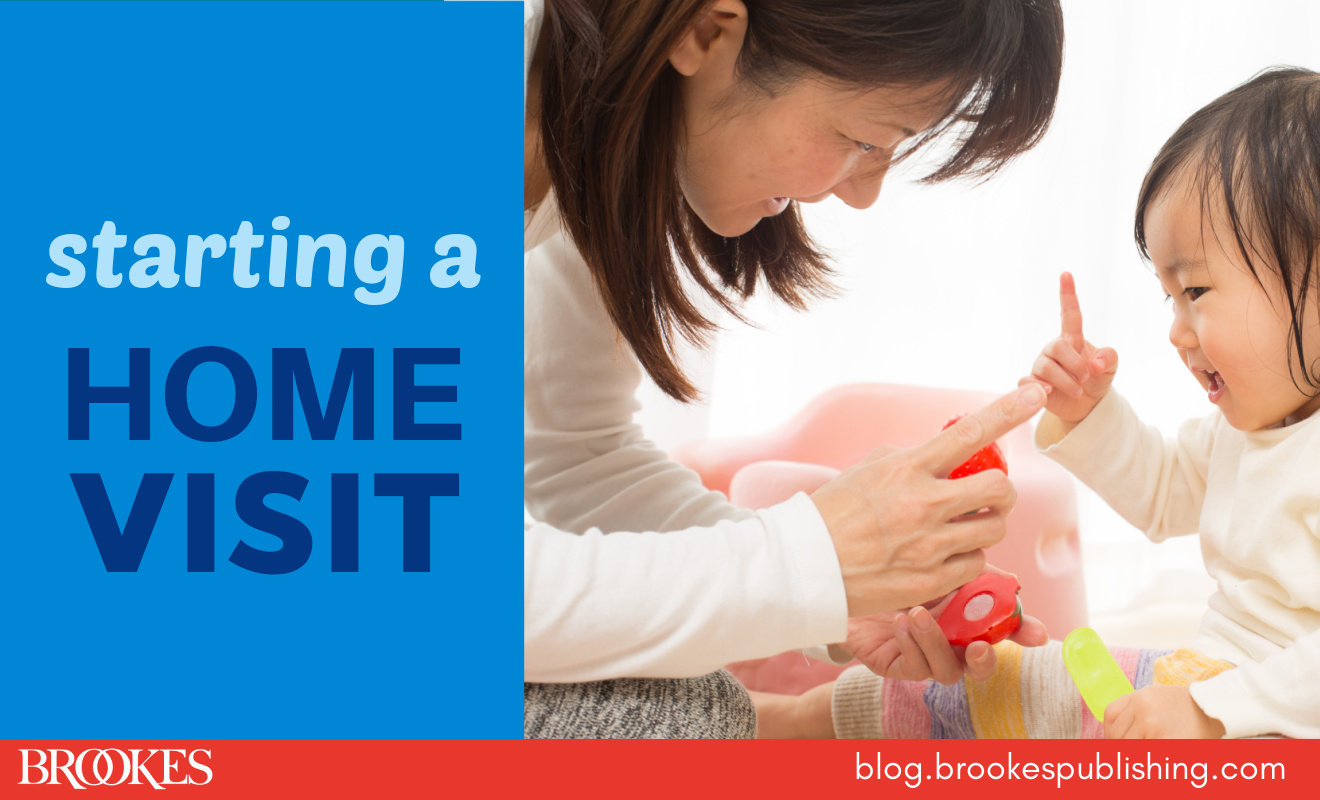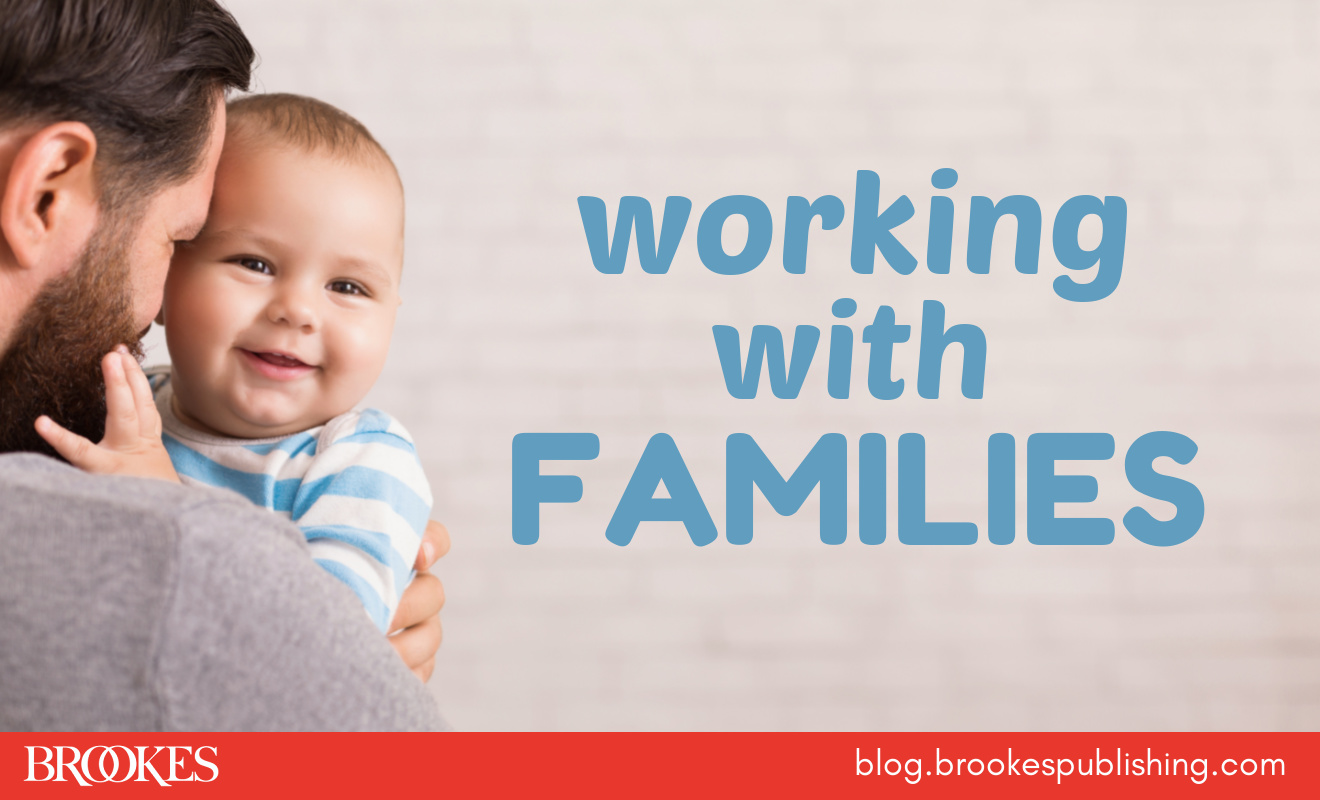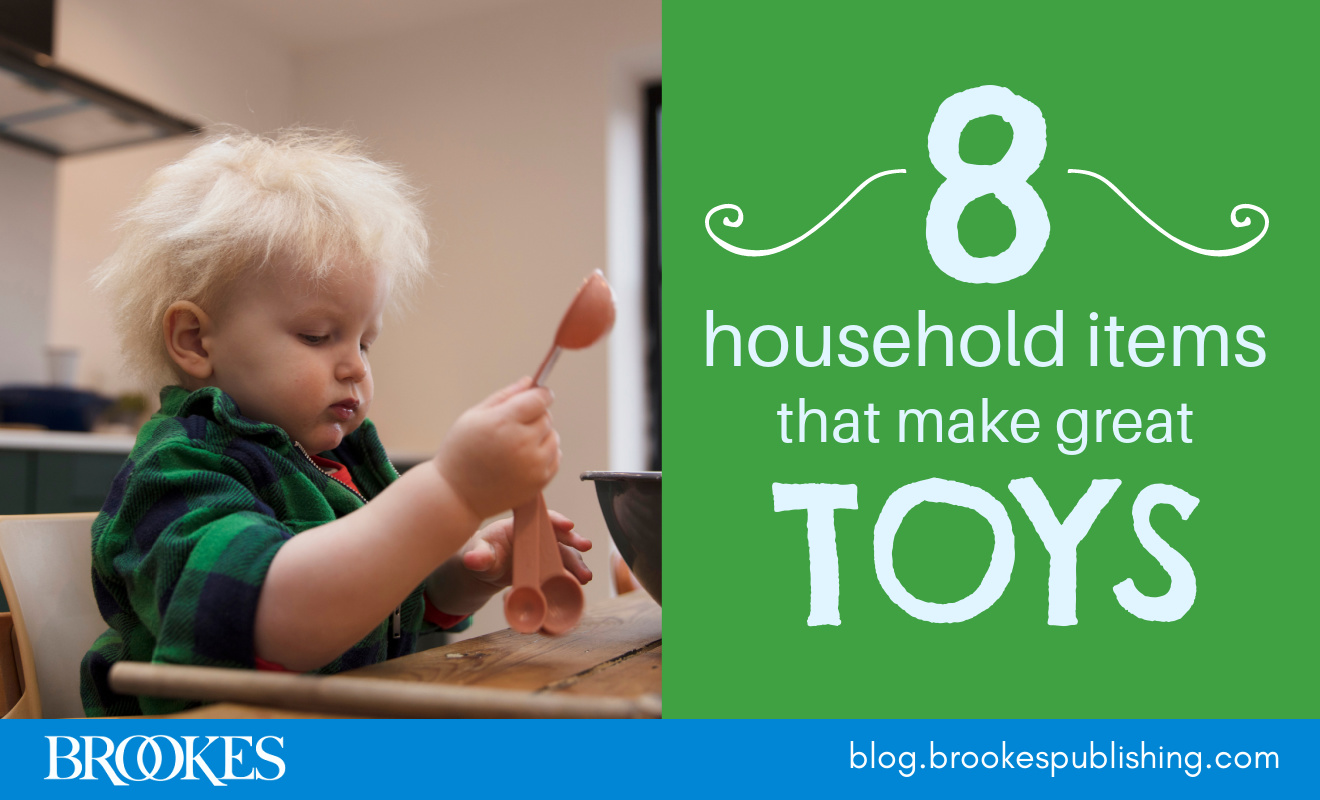Parents and early childhood professionals know that when it comes to toys, young children don’t need the latest, most expensive gadgets from the store. It’s often the simplest materials and objects that give kids the most joy, spark their imagination, and help reinforce their emerging motor and pretend play skills.
 In today’s blog post, we’re sharing 8 ideas for turning everyday household items into fun, skill-boosting toys for young children. Adapted from The Art and Practice of Home Visiting, Second Edition, this list will be equally useful for parents and professionals who care for young children. (Have an idea of your own that’s worked with your child? Add it in the comments section at the end of this post!)
In today’s blog post, we’re sharing 8 ideas for turning everyday household items into fun, skill-boosting toys for young children. Adapted from The Art and Practice of Home Visiting, Second Edition, this list will be equally useful for parents and professionals who care for young children. (Have an idea of your own that’s worked with your child? Add it in the comments section at the end of this post!)
Large plastic drinking cups from fast food restaurants
Finally, something to do with all those cups! These are easy for young children to hold by the rim and stack and nest—in fact, kids might find them a lot easier to manipulate than blocks. Try prompting children to put small blocks or toys into the cups (they make a great noise when they hit the bottom!) and then pour the blocks from one cup to another. You can also use cups as bowling pins, or cover up a favorite toy with a cup to see if the child knows it’s still there and can uncover it. Work in vocabulary words like “in,” “out,” and “pour” as you play with the cups.
Individual plastic soda bottles
Here’s another way to recycle plastic bottles: Put some clear corn syrup or liquid glycerin, some food coloring, and some glitter in the bottle, seal it well, and let the child shake it up and look at the colorful swirls. In another bottle, you could mix oil and water with a few drops of food coloring. A fun alternative is to drop a few jingle bells into the bottle, put the cap on, and let the child make some music!
Spatulas
Teach the child how to use a spatula to flip “pancakes” (you can use lightweight coasters for the pancakes, or something else that’s similarly shaped). Put the pancake on the spatula when the child is first learning, and then show them how to slide the spatula under the pancake and flip it over or move it to a plate. Show your excitement when the child gets the pancake to its destination without dropping it. Spatulas also make great croquet mallets or golf clubs for small children—just make sure you use soft mesh balls to make these sporting activities safer for the spectators and the furniture.
Whisks
Wire whisks can be good to hang from an A-frame toy. If you put a large bell from a craft shop inside the whisk, the child can use it as a rattle. The child might enjoy banging this new rattle on the floor, a drum, or a tambourine to see what noises it makes. (Be careful when you select a whisk to use as a toy—some of them have pointy parts that might hurt a young child.)
Measuring spoons with a large ring holding them together
Measuring spoons can be an endless source of fun for a young child—and a great way to practice fine motor skills. Encourage children to:
- use the spoons to feed their dolls
- “lace” the spoons back onto the ring
- nest spoons from larger to smaller
- shake metal and plastic spoons and notice the different sounds they make
- scoop beans or other small objects from one container to another (just make sure the child doesn’t try to eat them)
- scoop water from one cup to another
While the child plays, introduce vocabulary words like “on,” “spoon,” “shake,” and “scoop.”
Milk or other cartons
Cardboard milk cartons can be fun to play with—wash them and cut off the tops so children can put toys or other objects in them. Provide the child with different sizes of cartons, too: egg substitute containers, Pringles cans, plastic baby food containers. These can make interesting blocks to stack and build with. Putting a bell inside a few of the cartons, or adding some uncooked rice or beans, can make them fun to shake. (Make sure you seal containers tightly if you put anything inside.)
Plastic ketchup and mustard dispensers
Young children tend to like bright colors like red and yellow, so ketchup and mustard bottles might really catch their eye. You can make these into rattles for a child by putting some beans in them. Or show the child how to squirt air through the empty bottle to push cotton balls across the table (this is good fine motor practice). Children can also use the bottles during pretend play—they can pretend to be a chef and squeeze some ketchup and mustard onto your food before they serve it.
Herb and spice containers
Put some rice, beans, or bells in the containers to make small rattles. If you make some rattles with round bottles and others with square containers, the child can learn about “roundness” and “squareness” as they touch and play with the rattles. Turning the tops to take them off and put them on might be a little hard for young children, but when they are ready, let them try it. If you put a favorite small toy of theirs in the bottle and then put the lid on, they might be even more motivated to open it up. During play with small containers and lids, use key vocabulary words such as “on–off,” “turn,” and “twist.”
Share today’s post with parents of young children, and give them some easy ideas for repurposing everyday objects into skill-boosting toys for their children. Or if you’re a home visitor, keep these ideas in mind as you visit families and engage children using the materials they have readily available. (Don’t forget that activities should be supervised at all times by an adult. Any material, food, or toy given to a young child should be reviewed for safety.)

The Art and Practice of Home Visiting
Second Edition
By Ruth E. Cook, Ph.D., & Shirley N. Sparks, M.S., CCC-SLP
Presenting a collaborative, family-centered approach to home visiting, Cook and Sparks prepare professionals to form respectful and productive partnerships with caregivers and help each unique family reach their specific goals. Home visitors will get practical, in-depth guidance on all the complex issues they’ll face in their work with families and children, including implementing evidence-based practice; providing trauma-informed care; and addressing challenges with sleep, feeding, and behavior.
Stay up to date on the latest posts, news, strategies, and more!
Sign up for one of our FREE newslettersMore posts like this

24 At-Home Learning Activities to Share with Parents of Young Children
March 17, 2020
6 Things to Do At the Beginning of Every Home Visit
November 4, 2021


Write a Comment
Your email address will not be published. Required fields are marked *
Post a Comment